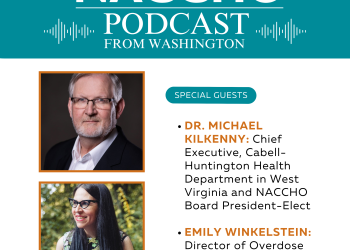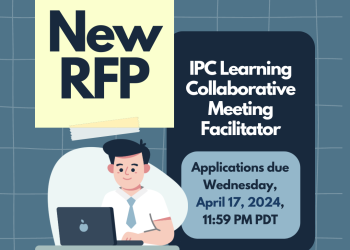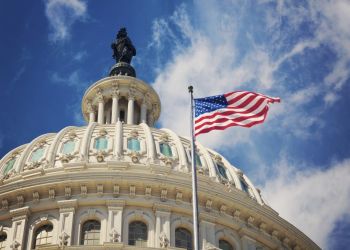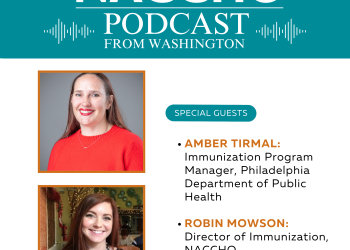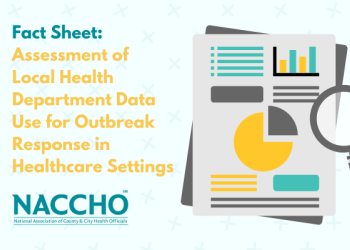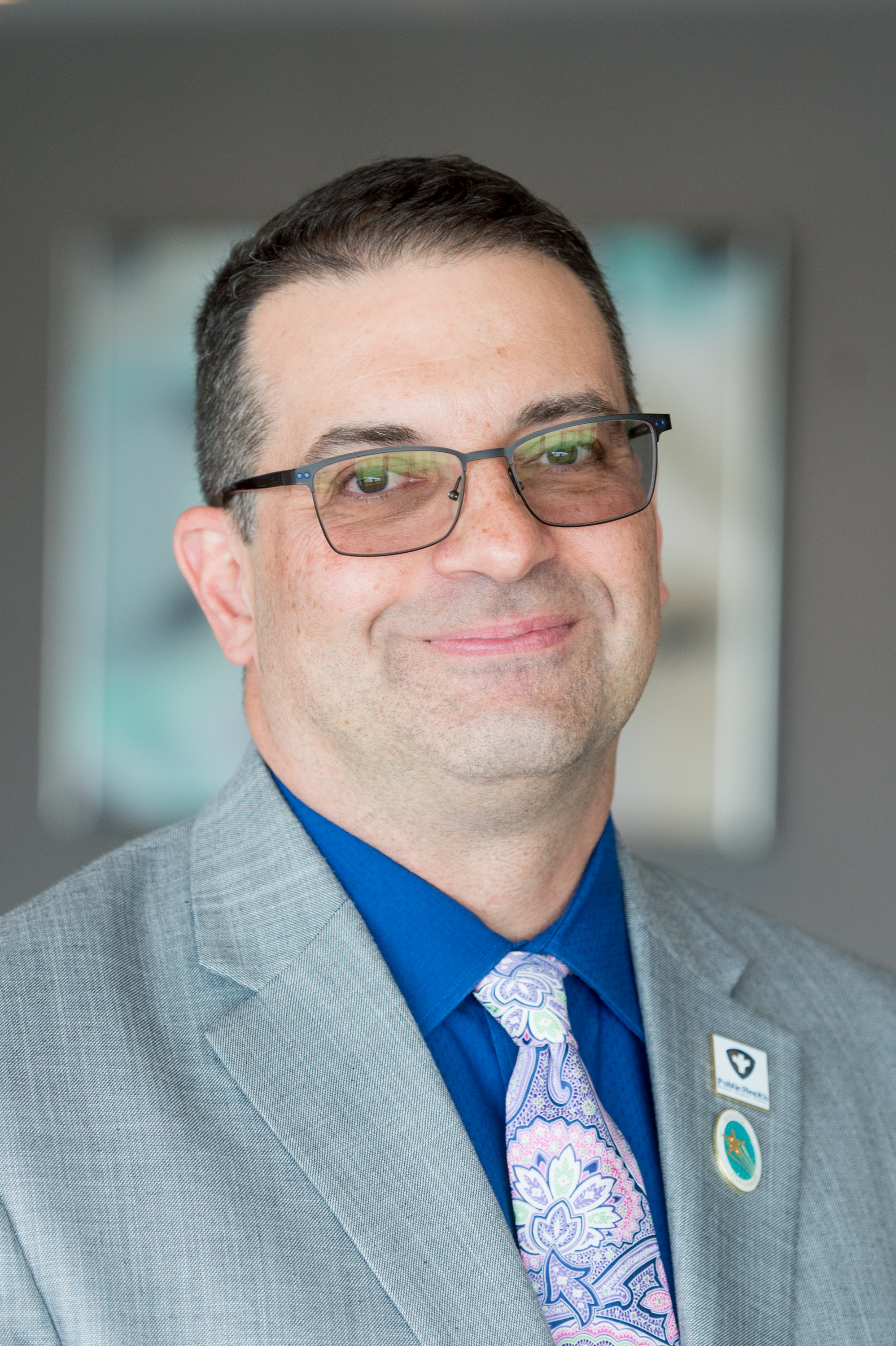 Interview by Lindsay Tiffany, Director of Publications, NACCHO
Interview by Lindsay Tiffany, Director of Publications, NACCHO
On July 1, Kevin G. Sumner, MPH, Health Officer and Director of the Middle-Brook Regional Health Commission in Green Brook, NJ, became NACCHO’s President. Sumner is a long-time, dedicated member of NACCHO and has served on a variety of advisory groups including the Membership Committee, the Performance Improvement Workgroup, the Finance Committee, and the Public Health Communications Workgroup. He has served on NACCHO’s Board of Directors since 2012. He recently spoke to NACCHO Voice about his career path, the challenges that keep him up at night, and how he helped to successfully advocate to get $10 million for local health department lead activities incorporated into the state budget.
Tell us about your career path in public health and how you got to where you are today.
My start in public health was by total chance. I was a biology/pre-med major and realized about halfway through my undergraduate career that I didn’t really want to be a doctor anymore; I liked being outdoors too much. So I switched my focus to ecology and wildlife and also double-majored in classical humanities, which allowed me to be outdoors experiencing the environment. When I graduated, I answered a newspaper ad for an environmental officer at the health department that I’m still with today. I started out as a Registered Environmental Health Specialist and spent a lot of time outdoors doing inspections.
I don’t think I was unique in that I fell into public health by chance. When I started, public health as an undergraduate degree wasn’t a popular option. I think a lot of people who started their careers around then have similar stories about how they got into public health.
My health commission has been very good to me over the years. We have a rather unique structure because my health department is a separate governmental unit from the communities we serve. The health commission supported me in getting my master’s degree in public health. Here in New Jersey, we license both our environmental health inspectors and our health officers, and they supported me in obtaining both licenses. Thirty-four years later, I am in the same place but doing very different things.
What has kept you in public health?
I realized that you can get a lot bigger bang for your buck serving populations as opposed to individuals. Serving individuals is also important, of course, but you can have a much bigger impact serving communities and populations. The breadth and diversity of public health is also impactful. These have spurred my passion in public health.
When did you first hear about NACCHO?
The previous health officer, before I became director, was minimally involved with NACCHO; the department was a member but we weren’t actively involved. Every so often I would see NACCHO bulletins or e-mails come through. When I became the director in 2000, I began to investigate it further. In 2001 or 2002, another health director in New Jersey who was on NACCHO’s Membership Committee invited me to a committee meeting at NACCHO Annual. Unbeknownst to me, he was retiring and looking for somebody to replace him on the committee. That was one way I got engaged with NACCHO. Then in 2005 or 2006, the then-president of our New Jersey Association of County and City Health Officials was asked for a representative to NACCHO and he recommended me. So, I got involved with the State Associations of County and City Health Officials (SACCHOs) and have been involved ever since. Over time, I got involved in more committees, then the Board, and that led me to where I am today.
What issues are especially pressing for your community right now?
My community is incredibly diverse. I serve five municipalities in Somerset County in central New Jersey. Of those five communities, we serve one of the top two or three highest socioeconomic status (SES) communities in the state and one or two of the lowest SES communities in the state. So we really see two different spectrums of issues. In the lower SES communities, we are focused on issues related to health disparities and access—access to healthy food, access to transportation, access to services. In the higher SES communities, it’s chronic disease—people have long commutes and sedentary lifestyles—and environmental issues like well-water contamination, failing septic systems, sewage disposal, etc. It is truly all over the map, however, in all my communities, we have issues with mental health and obesity and the social determinants of health.
What challenges you most in your role? What keeps you up at night?
The first is the frustration about a lack of resources, both financial and, more importantly, human resources. I currently have six people on staff: three registered environmental health specialists, two administrative staff, and myself. We contract for health education and nursing services. The amount of work for such a small department is challenging, so our partners are essential to our successes. We’re not able to accomplish everything we wish we could because we don’t have the people to do it all. The second challenge is the lack of recognition from elected officials and policymakers about the value and breadth of public health and the positive impact that investments in public health can have on communities over time. Policymakers—particularly those who are not members of the Boards of Health, who tend to be more attuned to and educated about the issues—don’t understand how public health touches everything in the community. They want to see an immediate return on investment; they don’t recognize that public health doesn’t necessarily provide an immediate return but it does provide immense long-term value. That’s what keeps me up at night: How do I convince them to invest in and value public health?
What are you most proud of in your career to date?
My board members are very supportive, highly educated, and understand to a great degree the value of public health. Public health in New Jersey has historically been almost exclusively environmental health. It’s taken a long time to change the focus from our traditional environmental health work. We’re slowly seeing a statewide shift to focus on the social determinants of health. My board members have picked that up very quickly so I’m pretty proud of how I’ve changed their focus.
Also, when I was president of our SACCHO, I created an ad hoc collaborative called PHACE, the Public Health Associations Collaborative Effort, which brought together seven different public health associations in New Jersey that previously didn’t collaborate at all. Over the last decade or so, we’ve really become a force in New Jersey—so much so that last year we were able to successfully advocate for an additional $10 million in the state budget for lead activities for local health departments. It took a lot of time but I think it’s success was due to the collective voice we were using. Instead of just health directors or just environmental health specialists, it was all of us saying the same thing at the same time and really amplifying our message to make that happen. That was really rewarding.
And finally, I’m proud of becoming president of NACCHO. As we discussed at the beginning of this interview, when I started, I didn’t even know what public health was. To be able to progress through my career to the point where I’m the president of the association that represents local health departments across the country is a little mind-boggling to me. It’s humbling but I’m also proud, especially coming from such a small health department. I’m grateful to my Board for supporting my activities with NACCHO and allowing this to happen.
What were some of the strategies you used to gain support from your Board of Health to expand your programming beyond environmental health?
We changed our annual report several years ago from just straight numbers—the number of inspections that were conducted, the number of summons that were issued, etc. Instead, we structured it around the 10 Essential Services and focused on all of the work we did under each of those services. We made it less data-driven and more narrative.
We also started hosting annual, sometimes twice-annual meetings of all of my board members where we highlight a public health issue that gets at the breadth of the work that we do. We also invite our elected officials and business administrators. As a result, they are now starting to connect the dots and are seeing the value of addressing upstream conditions and policies.
What advice would you give to someone just starting a career in a local health department?
I teach undergraduate public health now. One of the things that I always say to my students is know as much as you can about as many things as you can—you don’t necessarily have to know all the details, but have a wide range of knowledge and know how to get the details if you need to. Public health is so broad that you can’t possibly know everything, but if you know a little bit, you can access the information you need. For example, just yesterday I got a call from one of our towns about bed bugs in an ambulance. I was in EMS, I have known the person who called for a long time, but I didn’t know how to deal with bed bugs in an ambulance. However, I knew the sources to go to get some answers for him.
My other piece of advice is patience. It can be frustrating at times, particularly around educating people about the value of public health. It takes patience to change people’s minds—community members, policymakers—but we need to be persistent in our efforts to spread the word about public health. Serving the public can be rewarding if you are passionate about the work.
What are your priorities for NACCHO during your term as President?
First, I’m focused on small and medium-sized health departments and how NACCHO can support them. How we can take the lessons of larger big-city health departments and translate them to be helpful in smaller departments that don’t have the same resources? And conversely, how we can take the lessons from smaller health departments to help inform the work of larger departments and help them work more effectively and efficiently using fewer resources? I’m focused on helping NACCHO try to answer those questions. Part of that is also defining what small and medium-sized local health departments are, which is a challenge. NACCHO has started a Rural Health Section, which is great, but I’m in New Jersey and while we have some rural areas, my department is not rural but it’s still small. I want to look at all of these different types of local health departments and their structures and make sure that NACCHO is supporting their work as much as possible.
My second priority is partnerships. I think there is room for NACCHO to rebuild and enhance existing relationships and develop new ones. I think there is a lot more we could be doing with our partners. For example, just last month I was at the National Association of Local Boards of Health’s annual meeting and we discussed a variety of ways we can collaborate with them. Building up our partnerships will help us amplify the public health voice.
What do you do for fun?
I have been collecting and rating beer since about the mid-1970s—long before the current craft beer craze. In fact, there was a time when friends and families would search for beers that I didn’t have in my collection and would struggle to find them. I have about 2,000 beers in my collection. I’m also brewing my own—I just brewed some for my daughter’s upcoming wedding.
I also like to collect and learn to play eclectic musical instruments. At the board meeting at NACCHO Annual I used bones instead of a gavel to keep the meeting running. The bones are probably the most ancient instrument—they are literally bones that are ancient percussion instruments. They are popular in Celtic traditional music. I also have a donkey’s jawbone that was used as a percussive instrument—it’s very difficult to play! Of course, I still also enjoy being outdoors hiking, gardening, and enjoying nature.
